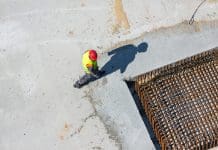Meticulous recordkeeping can seem like a tedious task but, in the event of a construction dispute, it can often make the difference between winning and losing. Jessica Tresham and Hannah Gardiner of law firm Womble Bond Dickinson look at the importance of getting recordkeeping right
Futureproofing and protecting your construction business from both anticipated and unexpected events is more important than ever in the current climate. A vital step in this process is safeguarding against potential construction disputes and seeking advice early, before they escalate.
The number one rule we advise all of our clients in the construction industry to follow is accurate recordkeeping. Accurate records often make the difference whether an issue escalates into a full dispute and, if it does, whether a case is won or lost regardless of what actually happened ‘on the ground’.
What may seem like a tedious task at the outset will pay dividends should you find yourself facing a construction dispute, which could be long, laborious and costly further down the line.
Here we share our essential and quick-win guide to keeping records.
Agree on recordkeeping upfront
Misunderstanding and miscommunication are common roots of any problem and especially in disputes. Make a determined effort to agree on the right records to be kept when negotiating your contract and remember that record requirements differ depending upon the form of contract.
Forget hindsight – it’s crucial to recognise the importance of decisions you make at this stage in the event of a dispute later. Not only should you aim to set out the full extent of records required but also how these will be created and stored, whether that’s in paper or electronic form, the frequency of updates, and the duration for which recordkeeping will happen from pre-build to post-handover and beyond. Once agreed, actively follow those contractual requirements and ensure that all project team members are aware of their recordkeeping obligations.
Establish structure – and stick to it
An issue can quickly escalate into a dispute (and potentially an adjudication with its established short timescales) so when it does, gathering evidence from records within a short timeframe is no mean feat.
Establish a structure from the beginning to ensure ease of searchability and filtering to find what is relevant and useful in an efficient and timely manner. While there isn’t a one-size-fits-all method, there are many sophisticated document management software tools available. Bear in mind that every file and piece of data may need to live for many years to come, so choose a system that will best accommodate future circumstances, such as office relocations, personnel turnover and governmental policies on the handling and storage of information. Ensure that your recordkeeping complies with GDPR legislation.
Keep your discipline!
Having complete discipline in maintaining this structure is the logical next top tip. Treat every record as if it were associated to a developing construction dispute so you can spot gaps and vulnerabilities in the information from a heightened awareness perspective. Arrange regular training sessions to refresh skills and improve the way in which your team logs the records and run spot checks with mock dispute scenarios to ascertain the system is working effectively.
Be clear and concise
Recorded entries should be precise and clear. Regardless of whether the evidence may be used to defend the company as part of a claim or simply for project reports, each type of record will have its own criteria.
For instance, a photograph taken on a phone or digital camera will carry a timestamp and a GPS meta tag but it would be sensible to also manually document the time and geographical location accurately to allow for tech errors and also for easy searching and retrieval.
For a site diary or data of a qualitative nature, lose the jargon so there is no room for misinterpretation or ambiguity. Ensure that you record the reason for the delay. For example, if materials are delayed due to customs hold-ups at the port, ensure that this reason is accurately recorded in the log.
Be utterly transparent
To demonstrate due diligence, apply an “around the clock” mentality to keep all parties to the agreement comprehensively informed. Share records with all agreed parties in real time and ask recipients for both their receipt confirmation and their confirmation that the records are satisfactory to them. If delays occur, take extra care to check in daily – or more regularly – to be transparent and thorough in detailing the impact they will have, both short and long term.
In summary, reaching a swift resolution for claims can lie in meticulously produced records, starting with basic contract management and outlining the scope of records.
Reduce risk by implementing a system based on clarity to simplify the process of locating and retrieving information when required; get buy-in from the whole team so that they are sensitive to the positive or negative consequences; and rectify poor recordkeeping at the source through organised control checks and reporting.
Jessica Tresham
Partner
Womble Bond Dickinson
+44 (0)2380 20 8065
Hannah Gardiner
Associate
Womble Bond Dickinson
+44 (0)207 788 2509
Twitter: @wbd_uk
LinkedIn: Womble Bond Dickinson (UK) LLP
YouTube: Womble Bond Dickinson (UK) LLP







![[VIDEO] World’s largest crane lifts final ring at Hinkley Point C Big Carl, the world's largest crane, lifting the final liner ring for Hinckley Point C](https://www.pbctoday.co.uk/news/wp-content/uploads/2024/10/94747-218x150.jpg)





